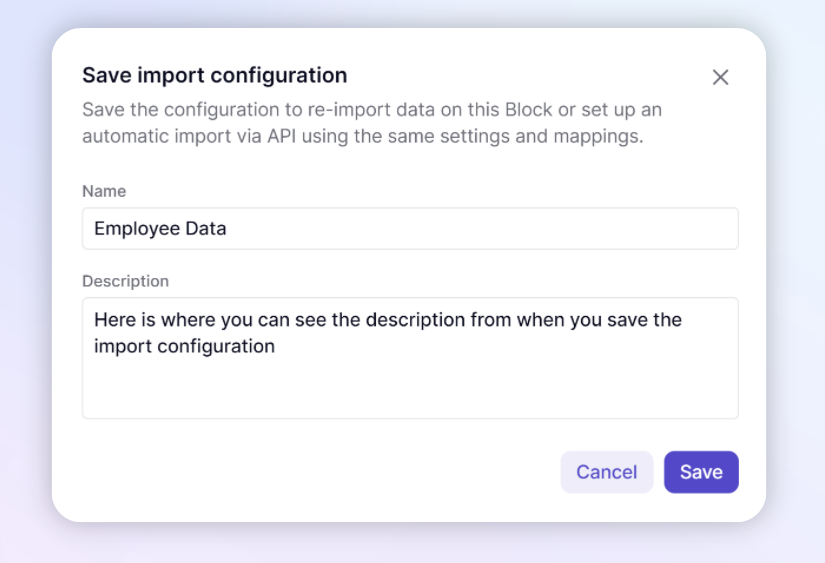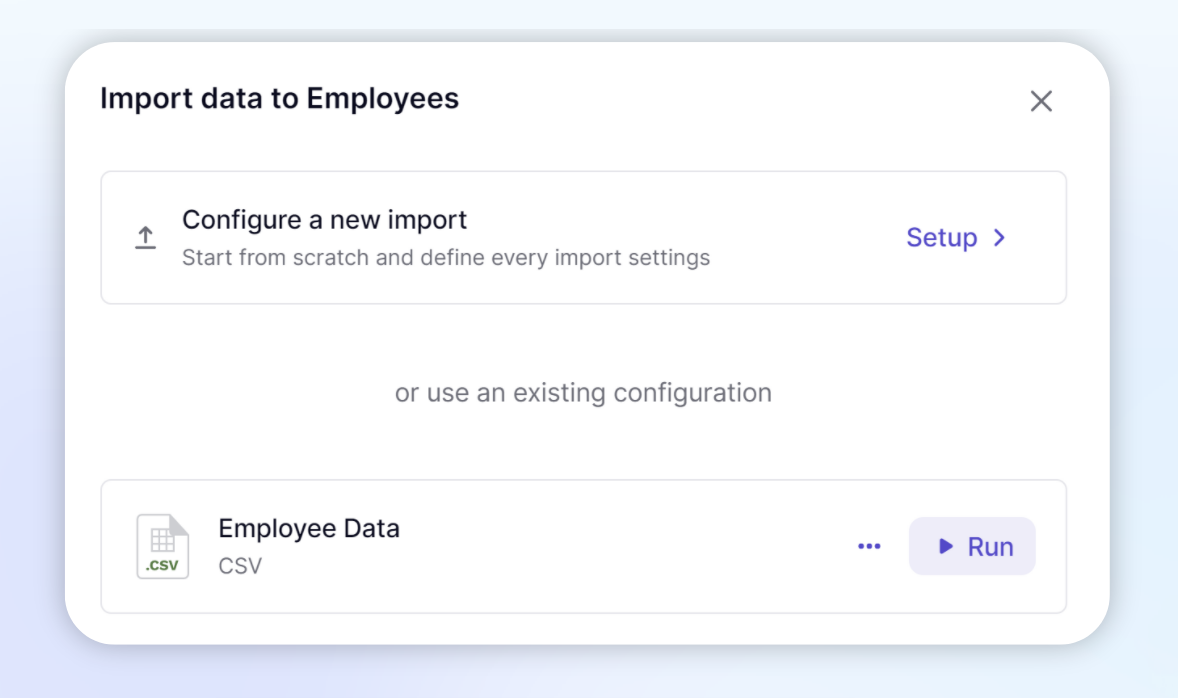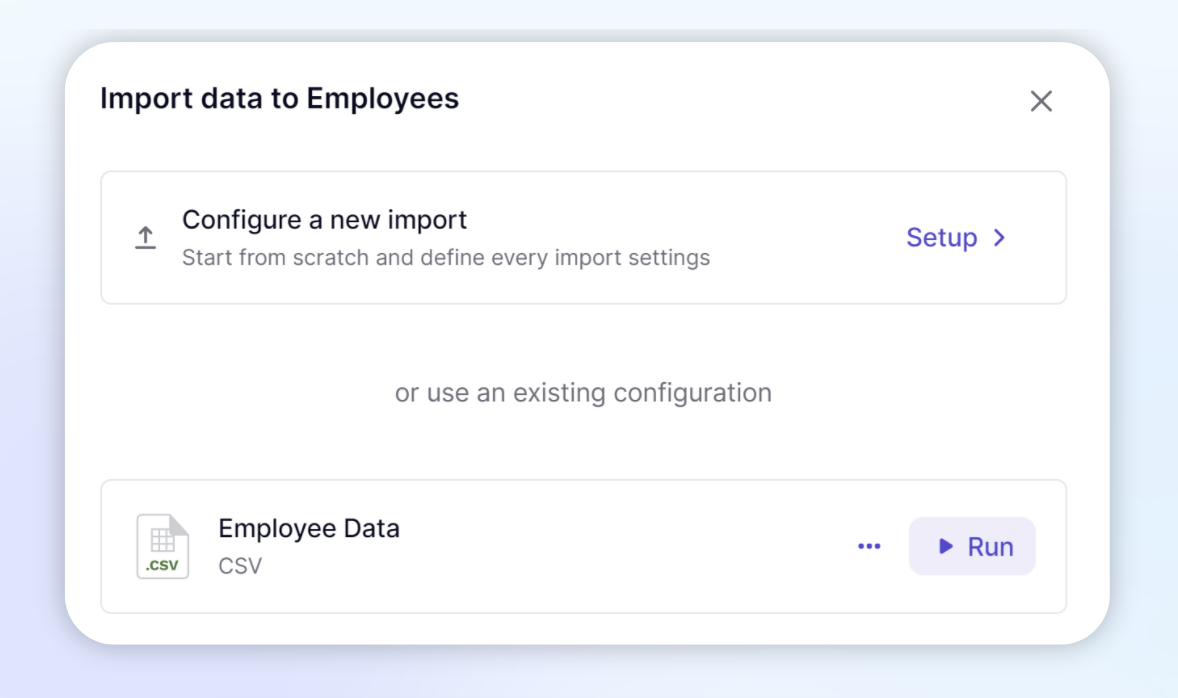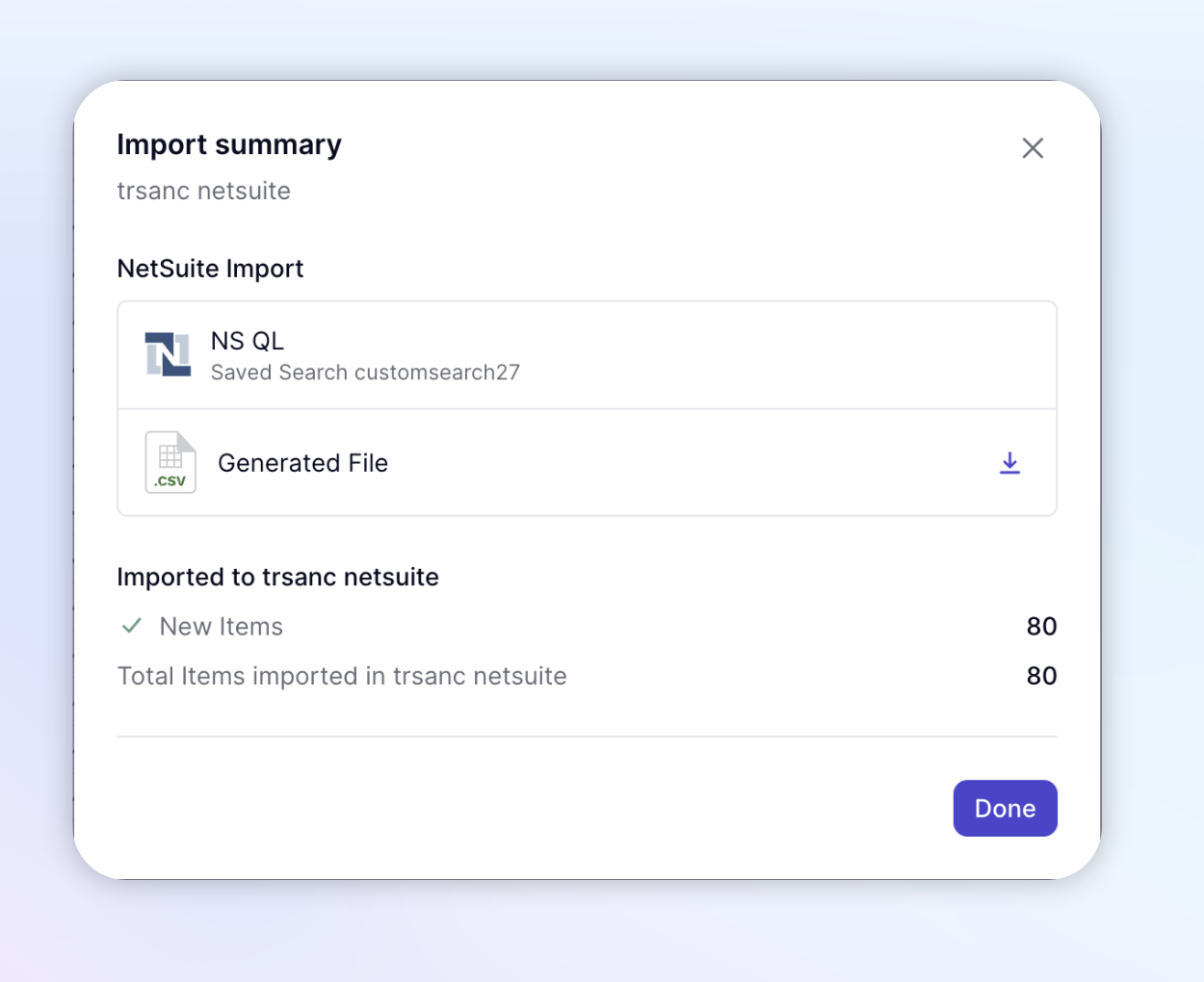Bringing the latest data into Pigment makes planning easier, this article will discuss how to manually trigger an import for both a CSV and an integration. It will also discuss some tips around saving your CSV file and configuration to be able to run multiple times.
What type of imports can be run?
In order to trigger an import, you must first establish the import configuration for a CSV, or establish a connector through Integrations. This article will discuss how to save configurations for a CSV import. For all other integration types, please follow the specific steps for your connection. You can find articles relating to those connections in our data imports section.
Triggering an import steps
Setting up an import to be triggered is a 3-step process:
- Establish a standard with your CSV
- Set up an import into Pigment and save your configurations
- Run the import from the block import screen
Establish a standard with your CSV
Export the data you want to transfer into Pigment in a CSV format. Make sure the structure of the data is identical to the one that will be used for the import. For example, it must have the same headers and CSV delimiter. You will need to manually import this data into Pigment once in order to define how pigment should read the file and the appropriate mappings.
When you trigger an import with a CSV, it will ask you for a file, it's important for the file to have the same settings, or else you will get errors. If there is a major change to the file, we outline how to update that below.
Set up an import with the CSV in Pigment
Go to the Block (List or Metric) you want to feed with the data. Import the CSV file in the Block using the "Import data" feature.
Save the configuration of the import using the "Save configuration" option. This will save Step 1 and Step 2 of the import configuration
Note: You don’t need to import the data when you save a configuration unless you create new properties in that import. Once it is saved, just leave the funnel and no data will be imported.
.

Give a name and description for your import configuration so that you can recognize when you go to run the import again.

| 
|
Note: All your properties need to already exist in your list for the configuration to be able to be saved without running the import. If your dimension list or your transaction list doesn’t include yet all properties you want to map during your import, you first need to create them either manually or run an import to add them. Once the property has been added, you will be able to save a configuration mapping to those properties.
Review an existing configuration
You can review an existing configuration to make adjustments or to make sure the configuration matches a new file. If you want to review an existing configuration, click on “Import data” and on the three dots next to the configuration you want to deep dive. The option “Load and Review configuration” will enable you:
- in the case of an integration review the setup and how the data is mapped and parsed
- in the case of a CSV file, to reimport your file and see the mapping and custom parsing
You will be able to make some changes if needed and save that new configuration by hitting save.
Deleting or renaming import configurations
If you want to delete an outdated import setup, visit your block settings and hit the Import configurations tab: you will retrieve all the saved import configurations for that block and be able to delete them by clicking on the bin icon. You can also rename it directly from the import modal by clicking on the three dots and hitting “Delete”.
You made a spelling mistake or want to change the title of your configuration? The rename option can be found in the same tab of the block settings or on the three dots menu: just click on the pen icon.

Triggering the Import to run
CSV
Once you have saved a configuration and need to run it, just click on import data. A modal will appear giving, you the possibility to set up a new import or to use one of your saved configurations. In case of the data coming from a CSV file, you will be asked to load the CSV file and your data will then be imported. Remember the file settings and headers must match the saved configurations.
Integration
In case of an integration with another tool, just hit “Run” and your data will be imported straight away. After running the import, you will be given the option to Generate File, this will generate a CSV output of the integration pipeline.

Tip for Transactions list
For all transaction list imports with no unique property, if your new data includes existing items in your list, you first need to delete your existing data before running your setup configuration in order to avoid duplicated items. To do this, click on “Edit list”, select all items and delete them. You can now run your import!
This article covers manual imports, if you plan on using an API to trigger an import, please check out the article on How to generate an import configuration ID and How to trigger an import with APIs



